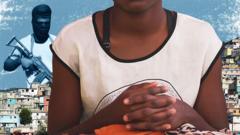Reports have indicated a steep increase in extortion incidents and gun violence across urban areas in Peru, revealing a nation under siege by criminal syndicates.
**Gang Violence Grips Peru: Fear and Extortion on the Rise**

**Gang Violence Grips Peru: Fear and Extortion on the Rise**
Peru sees a surge in gang-related violence and extortion, traumatizing communities and threatening local businesses.
In Lima, Jorge Tejada stood amidst the ashes of a bus that had been set ablaze outside his recycling business—a grim reminder of the violence fueled by ruthless gangs. The incident, he notes, was likely retaliation for his refusal to comply with a local gang’s demand for monthly extortion payments. His neighborhood, once a bustling yet peaceful community, has become synonymous with fear and violence, a stark transformation reflecting a growing trend across Peru.
The extortion epidemic in the South American country has skyrocketed since 2017, skyrocketing from mere hundreds per year to over 2,000 incidents monthly, according to national police data. This alarming spike is also marked by a disturbing increase in murders conducted by hired hitmen, with communities left to reckon with the often brutal consequences of defiance against criminal enterprises.
Tejada recounts the community's plight, describing how family-owned bodegas and eateries have been targeted—some facing bomb attacks—while shop owners have been forced into hiding or worse. "These days, anyone can be an easy target," he lamented, reflecting on the sense of shattered safety that now pervades daily life.
Peruvian authorities struggle to cope with this escalating violence as citizens grapple with the haunting reality of their new norm: living under the shadow of criminal threats. The severity of the situation begs the question: how can communities regain the tranquility they once knew, amidst a growing wave of organized crime threatening their very existence?
The extortion epidemic in the South American country has skyrocketed since 2017, skyrocketing from mere hundreds per year to over 2,000 incidents monthly, according to national police data. This alarming spike is also marked by a disturbing increase in murders conducted by hired hitmen, with communities left to reckon with the often brutal consequences of defiance against criminal enterprises.
Tejada recounts the community's plight, describing how family-owned bodegas and eateries have been targeted—some facing bomb attacks—while shop owners have been forced into hiding or worse. "These days, anyone can be an easy target," he lamented, reflecting on the sense of shattered safety that now pervades daily life.
Peruvian authorities struggle to cope with this escalating violence as citizens grapple with the haunting reality of their new norm: living under the shadow of criminal threats. The severity of the situation begs the question: how can communities regain the tranquility they once knew, amidst a growing wave of organized crime threatening their very existence?

















